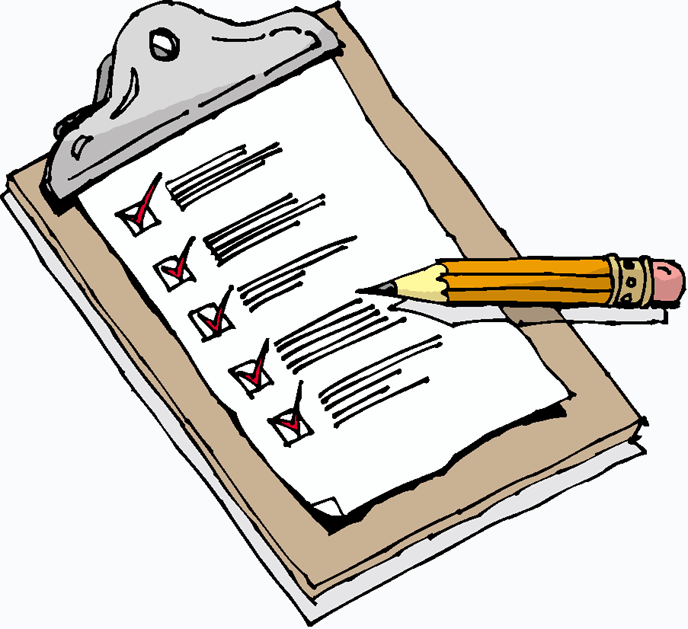
Effective Health and Physical Education for an Ontario Classroom

Ms. Clemmer's Health & Physical Education Classroom
Developing a Safe, Inclusive, and
Developmentally Appropriate HPE Program


Safety
- Prior to teaching the skills of the activity, the teacher must outline the possible risks of the activity; demonstrate how to minimize the risks, and set procedures and rules for safe play (Ontario Physical Education Safety Guidelines, 2014)
- Teachers should be aware of all policies, procedures, and guidelines related to safety
- Effective supervision, as well as the development of consistent routines and expectations for all activities will allow teachers to manage risks
- Select age-appropriate activities
- Give attention to appropriate progression in the level of difficulty of the skills involved
- Ensure facilities and equipment are used safely
- Read through the Curriculum Documents as well as the Ophea.net website
Equipment
- The teacher must make a pre-activity check of the equipment to be used -- hazards must be identified and removed or isolated
- Protective equipment must be properly worn by the students
- All balls must be properly inflated
- No home-made equipment is to be used
Clothing and Footwear
- Appropriate athletic footwear is required
- Students must wear appropriate clothing for physical education classes; changing should be optional for students as long as they are wearing appropriate clothing
- Hanging jewelry must not be worn
- Parents/guardians must be made aware of safety precautions of eyeglasses for some activities
- Long hair must be secured so as not to block vision


Developmentally appropriate physical education accommodates a variety of individual differences, such as prior knowledge and experience, developmental status, body size, age, level of fitness and skill, cognitive and affective experiences, and cultural identity. Each student is unique, and requires a unique learning experience.
Motor skills change sequentially, which means motor skills progress in an order, over time. Certain motor patterns within one skill appear before other patterns. We see evidence of the sequential nature of change as skills go from simple to complex. The implication of this for teachers means that students must master the simple motor skills before we can teach them the more complex skills. Failure to acqure advanced patterns of coordination for these skills can restrict later skill development.
A good starting point for understanding a learner's developmental readiness is to assess the current task being performed. The outcome of a developmentally and instructionally appropriate HPE program is a physically educated person who does the following:
-
Demonstrates competency in many movement forms and proficiency in a few movement forms
-
Applies movement concepts and principles to the learning and development of motor skills
-
Exhibits a physically active lifestyle
-
Achieves and maintains a health-enhancing level of physical fitness
-
Demonstrates responsible personal and social behaviour in physical activity settings
-
Demonstrates understanding and respect for differences among people in physical activity settings
-
Understands that physical activity provides opportunities for enjoyment, challenge, self-expression, and social interaction
Special Rules/Instructions
- Class activity must be modified according to the age, ability level, language, and experience of students and the facility available
- Teachers should stay current on safe exercise techniques
- All classes must include appropriate warm-ups and cool-downs
- Skills must be taught in a proper progression
- Students must be made aware of ways to protect themselves
- Students must receive instruction on safety procedures
- Students must receive instruction on the importance of reporting symptoms related to a suspected concussion
- Students must not close their eyes while moving
- Avoid backward-running races -- emphasize controlled movement when requiring students to walk or run backwards
- Any student playing with a cast must provide a doctor's note or parent/guardian signed permission
Facilities
- The teacher must make a pre-activity check of the facilities, hazards must be removed
- In an emergency situation the supervisor must follow School Board protocol
- Any use of a facility must be supervised
- Walls and stages must not be used as turning points or finish lines
- Foreseeable risks must be identified and precautions taken to minimize risks


Supervision
- Use of equipment and facilities are prohibited without supervision
- All activities must be supervised
- Teachers must establish routines, rules of acceptable behaviour and appropriate duties of students at the beginning of the year and reinforce throughout the year
- Students must be made aware of the rules of activities or games and rules must be strictly enforced

Inclusion Tips
-
Peer Assistance: use a buddy system to help build self-confidence for all students
-
Activity Area: modify the size of the activity area and the proximity to others
-
Equipment: use equipment that is appropriate in size and weight to ensure that all students are able to paricipate
-
Be a good role model! Show students how to speak to each other with respect, and be inclusive of all people no matter what!
Inclusive Physical Activity
"Inclusion is not bringing people into what already exists; it is making a new space, a better space, for everyone" (George Dei, 2006)
Physical education is fundamental to all students learning and development. With a wide range of needs within each classroom, getting everyone involved and participating can be daunting. Creating an inclusive environment is important for everyone. There are many types of special needs, cognitive and physical, thus each student requires a unique approach. A truly inclusive physical education class is not where children are all doing the same thing... it's one where children are participating at their own level of ability in a shared activity.
Equity and Inclusion
The Ontario equity and inclusive education strategy focuses on respecting diversity, promoting inclusive education, and identifying and eliminating the discriminatory biases, systemic barriers, and power dynamics that limit the ability of students to learn, grow, and contribute to society (The Ontario Curriculum: Health)
All Students, parents, and other members of the school community are welcomed, included, treated fairly, and respected. Diversity is valued, and all members of the school community feel safe, comfortable, and accepted. Every student is supported and inspired to succeed in a culture of high expectations for learning. All students see themselves reflected in the material they are learning, their physical surroundings, and the broader environment.
The implementation of antidiscrimination principles in education influences the entire school. It helps to create a culture where academic achievement and self-growth is appreciated, and discrimination and exclusion are forbidden.
In my classroom, to appreciate the diversity of my students, I would encourage students to teach dances and rituals from their backgrounds to the rest of the class, to help foster the community spirit of inclusion.
Universal Design in Education
Universal design puts high value on both diversity and inclusiveness, and ensures that each student in the class is receiving appropriate instruction and assessment for their needs. The practice of Universal Design in Education benefits all students, including those who are not receiving disability-related accommodations from the school. Examples of Universal Design applications in educational settings:
-
Physical Spaces: ensure physical spaces are welcoming, comfortable, accessible, attractive, and functional
Universal Design of Instruction
Universal Design can be applied to all aspects of instruction -- teaching techniques, curricula, and assessments
-
Class climate: encourage appreciation of diversity and inclusiveness in your classroom
-
Interaction: promote communication to be open and honest, and encourage regular communication between students and teachers
-
Physical environments and products: ensure facilities, activities, materials, and equipment are physically accessible to and usable by all students
-
Delivery methods: use multiple, accessible instructional methods
-
Feedback: provide specific and timely feedback on a regular basis
-
Assessment: regularly assess student progress using multiple, accessible methods and tools and adjust instruction as necessary
-
Accommodation: plan for accommodations for students whose needs are not met by the instructional design
(Universal Design in Education http://www.washington.edu/doit/sites/default/files/atoms/files/Universal-Design-Education-Principles-Applications.pdf)

Differentiating Instruction for Students with Disabilities
General Adaptations
Equipment
- Larger/lighter ball
- Use of velcro
-Larger goal/target
-Mark positions on playing field
- Scoops for catching
- Vary balls (size, weight, colour, texture)
Time
- Vary the tempo
- Slow the activity pace
- Lengthen/shorten the time
- Provide frequent rest periods
Rules, Prompts, Cues
- Demonstrate/model activity
- Partner assisted
- Disregard time limits
- Oral prompts
- Place student with disability near teacher
- Eliminate outs/strike-outs
Accommodations
Some students with special education needs are able, with certain accommodations, to participate in the regular curriculum. The accommodations required to facilitate the student's learning must be identified in his or her IEP.
Instructional Accommodations
- Demonstrate/model the activity
- Eliminate outs/strike-outs or win/lose situations
- Allowing extra time
- Changing the equipment to meet the students needs
Environmental Accommodations
- Provide more space for student
- Ensure proper lighting
- Place student near the teacher
Assessment Accommodations
- Give extra time
- Have a partner provide assistance
- Give verbal cues or prompts
- Adjust the rules of activities to increase students' chances of success
Guidelines for Meeting Special Needs in HPE
-
Focus instruction on what the student is able to do rather than on his or her disability or special education needs
-
Consult with the student about his or her needs and about choosing strategies that will help him or her feel comfortable and included
-
Approach each situation on an individual basis, in consultation with the special education teacher, making individual adaptations in response to student's needs
-
Make adjustments only when necessary and consider adjustments to be temporary and fluid - continue to make modifications and accommodations as needed
-
Break down new skills and focus on building each skill in a structured progression
-
Be fair to all participants and avoid drawing attention to accommodations or modifications that are provided for individual students
-
Make sure appropriate equipment is available
-
Adjust the rules of activities to increase students' chances of success while retaining a suitable level of challenge
-
Give verbal cues and prompts
-
Have a partner provide assistance
-
Consider what accommodations, adjustments, or special guidelines may be required to assist students in understanding social rules and codes of conduct
Resources for Safe and Inclusive Classrooms
Check out Ophea for resources such as Steps to Inclusion and adapted lesson plans

The Revised Health and Physical Education Curriculum has a lot of information about safe and inclusive HPE classes
http://www.edu.gov.on.ca/eng/curriculum/elementary/health.html